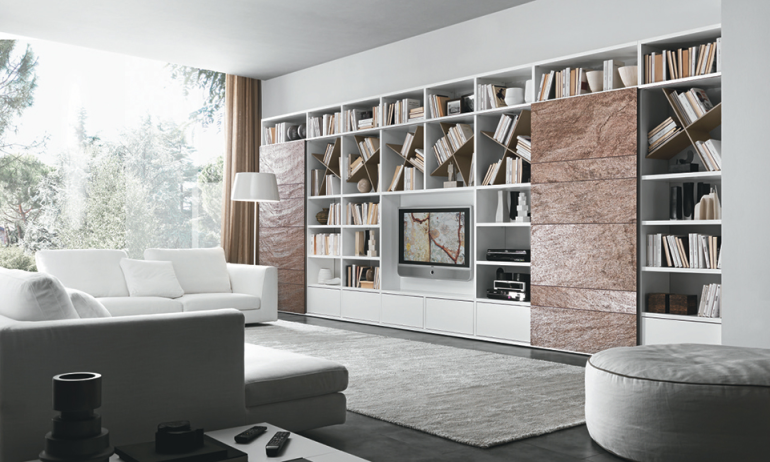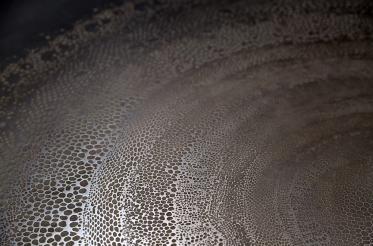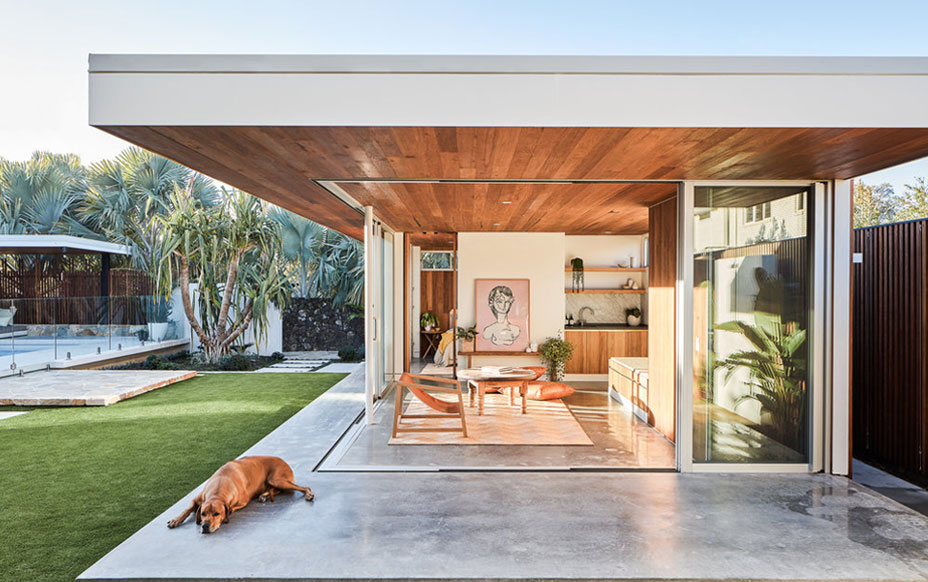
As complex as the science of surfaces is, we all desire something a little more natural, and with a bit of forward thinking we can bring the elements of technology and tactility together.
Cities and towns across the world are known for their buildings – many made of stones that reside close to home. You may know the term brownstone, a type of sandstone that is darker than most and has rocked the suburbs of New York for years, while in Wales local slate is the tile of choice.
In Australia, Sydney is also well known for its use of local sandstone though the Harbour Bridge pillars are made from granite, ferried from the coastal town of Moruya, and the Opera House, well it was the first building in Australia to be clad in ceramic tiles.
It is no surprise our affinity with the more natural look and feel draws us to towards stone as it does timber and patinaed metals. In our previous article we explored how 3D printing can transform virtually any surface into a work of individual art, including doors that remind us of traditional etching plates, though the application of this technology isn’t solely limited to flat objects or hi-tech graphics.

Axolotl's solid surface basin coated in a Cayman copper.
Axolotl are the creators and craftspeople who provide this extensive range of surface finishes. The range including semi-precious metals, concrete, terracotta and stone allows you to combine your favourite natural materials with pattern and texture.
Not limited to flat surfaces, organic forms such as the exterior of basins and baths can also be surfaced with this textured metal. Limited only by the scope of our imagination, applying a 3 dimensional pattern of metal with an aged appearance is as achievable as creating a more neutral, patinated treatment. These same techniques can be applied to furniture, sculpture and fixtures where a contrast of metal and timber provides an unexpected yet truly natural feel.

Florence Broadhurt's Daisies inlayed into timber by Axolotl.
These innovations also provide the possibility of combining materials in different ways. Inlaying complex patterns of concrete or metal into timber table tops or joinery is now possible. In fact, even the work of Florence Broadhurst has been given a modern makeover with over 500 of her prints being available in various material treatments for applications such as doors, feature walls and privacy screens.
While on the surface these treatments may appear natural, they are the result of 23 years of innovation by Sydney-based Axolotl who run by the motto “anything is possible”. These innovations open up endless possibilities at any scale, from a bowl to keep your keys in, to the door itself – they are highly technical in their production but completely natural in appearance.

Stone veneer is ideal for cabinet facades with a real rock finish.
One such innovation has resulted in thin sheets of actual stone being available for walls, joinery (pictured at the top of this article) or island bench facades. Literally peeled from the face of the rock, they are under 3mm thick and come in sizes up to 2.4 x 1.2meters – backed by a film for simple application, the surface appears as if a wall is made of solid stone. Bringing their processes together, these stone sheets can be inlayed with metal, timber and other materials while keeping the rugged surface of the original stone.
It may all seem very hi-tech and perhaps a little complicated but in the end, it actually comes down to imagination, and with a little bit of conversation the traditional feel we embrace of surfaces from our past can be achieved in some naturally striking ways.
FOR MORE INFORMATION ON AXOLOTL CLICK HERE
HOUSELAB HINTS
-Define a material palette based on the other elements in your home and work with your supplier to achieve the best results, they know their processes better than anyone.
-Engage a graphic designer or artists to create a pattern that is as bespoke as the finished object
-Ask questions because at the end of the day, anything may be possible
-Don’t over complicate things. A simple combination of materials can be far more effective
WRITTEN BY HouseLab



